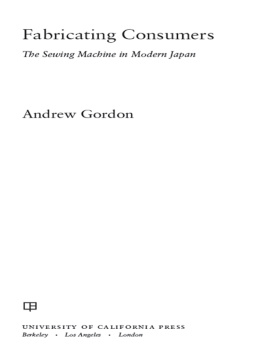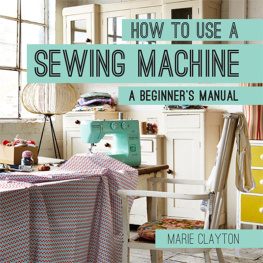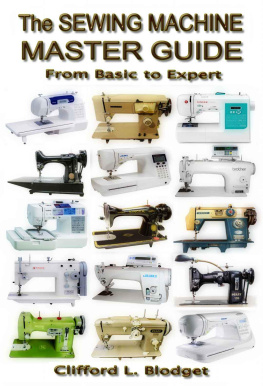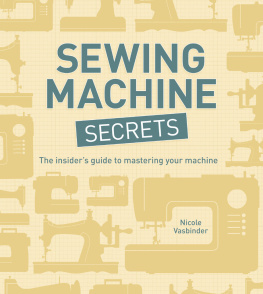A

B O O K
The Philip E. Lilienthal imprint honors special books in commemoration of a man whose work at University of California Press from 1954 to 1979 was marked by dedication to young authors and to high standards in the field of Asian Studies. Friends, family, authors, and foundations have together endowed the Lilienthal Fund, which enables UC Press to publish under this imprint selected books in a way that reflects the taste and judgment of a great and beloved editor.
The publisher gratefully acknowledges the generous support of the Philip E. Lilienthal Asian Studies Endowment Fund of the University of California Press Foundation, which was established by a major gift from Sally Lilienthal.
ASIA: LOCAL STUDIES/GLOBAL THEMES
Jeffrey N. Wasserstrom, Kren Wigen, and Hue-Tam Ho Tai, Editors
1. Bicycle Citizens: The Political World of the Japanese Housewife, by Robin M. LeBlanc
2. The Nanjing Massacre in History and Historiography, edited by Joshua A. Fogel
3. The Country of Memory: Remaking the Past in Late Socialist Vietnam, by Hue-Tam Ho Tai
4. Chinese Femininities/Chinese Masculinities: A Reader, edited by Susan Brownell and Jeffrey N. Wasserstrom
5. Chinese Visions of Family and State, 19151953, by Susan L. Glosser
6. An Artistic Exile: A Life of Feng Zikai (18981975), by Geremie R. Barm
7. Mapping Early Modern Japan: Space, Place, and Culture in the Tokugawa Period, 16031868, by Marcia Yonemoto
8. Republican Beijing: The City and Its Histories, by Madeleine Yue Dong
9. Hygienic Modernity: Meanings of Health and Disease in Treaty-Port China, by Ruth Rogaski
10. Marrow of the Nation: A History of Sport and Physical Culture in Republican China, by Andrew D. Morris
11. Vicarious Language: Gender and Linguistic Modernity in Japan, by Miyako Inoue
12. Japan in Print: Information and Nation in the Early Modern Period, by Mary Elizabeth Berry
13. Millennial Monsters: Japanese Toys and the Global Imagination, by Anne Allison
14. After the Massacre: Commemoration and Consolation in Ha My and My Lai, by Heonik Kwon
15. Tears from Iron: Cultural Responses to Famine in Nineteenth-Century China, by Kathryn Edgerton-Tarpley
16. Speaking to History: The Story of King Goujian in Twentieth-Century China, by Paul A. Cohen
17. A Malleable Map: Geographies of Restoration in Central Japan, 16001912, by Kren Wigen
18. Coming to Terms with the Nation: Ethnic Classification in Modern China, by Thomas S. Mullaney
19. Fabricating Consumers: The Sewing Machine in Modern Japan, by Andrew Gordon
20. Recreating Japanese Men, edited by Sabine Fr hst
hst ck and Anne Walthall
ck and Anne Walthall
University of California Press, one of the most distin
guished university presses in the United States, enriches
lives around the world by advancing scholarship in
the humanities, social sciences, and natural sciences.
Its activities are supported by the UC Press Foundation
and by philanthropic contributions from individuals
and institutions. For more information, visit
www.ucpress.edu.
University of California Press
Berkeley and Los Angeles, California
University of California Press, Ltd.
London, England
2012 by The Regents of the University of California
Library of Congress Cataloging-in-Publication Data
Gordon, Andrew, 1952
Fabricating consumers: the sewing machine in
modern Japan / Andrew Gordon.1st ed.
p. cm.(Asia: local studies/global themes; 19)
Includes bibliographical references and index.
ISBN 9780-52026785-5 (cloth: alk. paper)
1. Singer Sewing Machine CompanyHistory.
2. Sewing-machine industryUnited StatesHistory
20th century. 3. Clothing tradeJapanHistory
20th century. 4. ConsumersJapanHistory20th
century. I. Title.
HD9971.5.S484S565 2011
338.7'64620440952dc23
2011019065
Manufactured in the United States of America
20 19 18 17 16 15 14 13 12 11
10 9 8 7 6 5 4 3 2 1
This book is printed on Cascades Enviro 100, a
100% post consumer waste, recycled, de-inked fiber.
FSC recycled certified and processed chlorine free.
It is acid free, Ecologo certified, and manufactured by
BioGas energy.
Illustrations
TABLE
FIGURES
Preface
Over the past decade, I have been working on this history of the selling, buying, and using of the household sewing machine in Japan. As I pursued this project, I was impressed to learn in conversations with numerous friends and colleagues how common it had been to own a Singer sewing machine, at least for middle-class city-dwellers in Japan of the 1930s or later, the generation of my colleagues parents. And as I began to present preliminary thoughts and results of my research to academic and broader public audiences, I was further impressed by the emotional resonance the sewing machine held for so many.
One colleague, for example, wrote in a letter after he heard me speak, Listening to your talk the other night, I felt as if I was hearing my own history.My mother supplemented the family income as a dressmaker. She made clothes on order from neighbors or acquaintances and also sold through a local retail clothing store. If I am permitted to exaggerate slightly, the sewing machine is an object that links to memories of my mother a bit like the sled Rosebud in the film Citizen Kane.
Another colleagueI cannot recall who it wascame up to me after a talk and said that, influenced subconsciously, he was sure, by knowledge of my upcoming talk, the previous night he had dreamed of his deceased mother sitting at her sewing machine. In more than twenty years of writing and speaking on the history of (mainly male) industrial workers, I received no such emotionally linked reactions. I began to realize this was a topic worth pursuing seriously in part because of the long-lived meanings the sewing machine held not only for those who used it but also for the members of their families. My initial impression was that in a gender-divided landscape of memory, the sewing machine was of particular resonance for the sons of sewing mothers, but this proved incorrect. The breakdown of reactions simply reflected the fact that the majority of academics in Japan, and thus most of those in the audience at talks, are men. The sewing machine certainly carried great meaning for women as well as for men, both those who used it and those who watched their family members do so. I want to thank all those who have shared these recollections with me over the years, as well as those who offered advice, research assistance, or financial support for this project.
I much appreciate the feedback from audiences over the years in talks at D shisha University, H
shisha University, H sei University, Hokkaido University, Hitotsubashi University, Kyoto University, Kokugakuin University, Kobe University, Kansai University, Showa Women's University, Tachibana University, and Tokyo University in Japan, as well as Columbia, Duke, Harvard, the London School of Economics, Stanford, Oxford, and Yale in the United States and Britain.
sei University, Hokkaido University, Hitotsubashi University, Kyoto University, Kokugakuin University, Kobe University, Kansai University, Showa Women's University, Tachibana University, and Tokyo University in Japan, as well as Columbia, Duke, Harvard, the London School of Economics, Stanford, Oxford, and Yale in the United States and Britain.










 hst
hst shisha University, H
shisha University, H